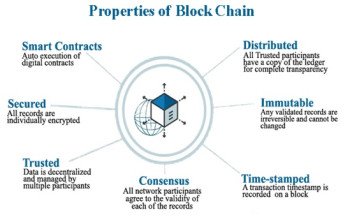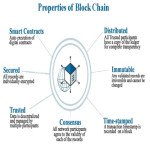Reducing the cost of blockchain technology—or finding viable alternatives—can be essential for manufacturing operations where cost efficiency is crucial. Here are several strategies to manage costs and alternative technologies to consider.
1. Use Permissioned Blockchains Instead of Public Blockchains
- Why: Public blockchains like Ethereum often have high transaction fees (gas costs), making them expensive for frequent transactions. In contrast, permissioned (private) blockchains allow organizations to set up controlled access for participants within their network, reducing fees and improving transaction speed.
- Examples: Hyperledger Fabric, R3 Corda, and Quorum are cost-effective permissioned blockchains with customizable fee structures, better scalability, and fewer resource-intensive consensus mechanisms.
2. Implement Layer-2 Solutions
- Why: Layer-2 solutions, like sidechains or rollups, help reduce transaction costs by processing transactions off the main blockchain and only periodically syncing with the main chain. This can significantly lower fees, especially for high-frequency applications.
- Examples: Polygon and Optimistic Rollups for Ethereum allow off-chain processing, cutting costs on the main network.
3. Reduce On-Chain Data Storage
- Why: Storing large amounts of data on-chain can be prohibitively expensive. Instead, store only essential transaction details on-chain while keeping larger data off-chain in a secure database.
- How: Use solutions like IPFS (InterPlanetary File System) for off-chain data storage while linking hash references on the blockchain. Filecoin is another blockchain storage solution that’s lower cost than storing directly on most chains.
4. Optimize Smart Contract Code
- Why: Efficient smart contract design can reduce the amount of gas consumed, especially on networks like Ethereum. By simplifying logic and minimizing unnecessary code, you can reduce transaction fees.
- How: Optimize with Solidity gas best practices (e.g., use fewer loops, optimize storage access) or consider using Rust on low-fee networks like Solana for faster, cheaper smart contract execution.
5. Consider Hybrid Blockchain Architectures
- Why: Hybrid solutions allow organizations to take advantage of blockchain’s security and transparency while using traditional systems for non-critical parts of the operation, cutting costs by limiting blockchain usage to specific applications (e.g., contract verification or audit trails).
- How: Companies like Chainlink provide hybrid solutions for connecting off-chain data with blockchain, allowing selective on-chain data recording to reduce costs.
6. Blockchain Alternatives for Similar Applications
Distributed Databases with Audit Trails: Alternatives like Apache Cassandra or Amazon QLDB (Quantum Ledger Database) can provide distributed, tamper-resistant data storage with audit capabilities. These solutions can be more affordable and easier to manage than a full blockchain.
- Use Case: Tracking product data, inventory, or warranty information with security and audit features.
Decentralized Databases: Solutions like Couchbase or BigchainDB are decentralized databases that provide some of blockchain’s benefits (e.g., distributed architecture) without the heavy cost of consensus mechanisms.
- Use Case: For high-volume, decentralized data storage needs where full immutability is less critical.
Cryptographic Hashing and Digital Signatures for Data Integrity: If your primary goal is data integrity without the need for a decentralized ledger, you can implement a regular database with cryptographic hash functions or digital signatures for data verification.
- Use Case: Quality control, where every product’s data is hashed and stored on a central server. Each update can have a hash-based "signature" to ensure no tampering.
Internet of Things (IoT) and Edge Computing for Traceability: In some cases, IoT systems combined with edge computing can provide secure data logging at each manufacturing stage without a blockchain. Data can be transmitted to a central server with robust encryption and timestamps to create a verifiable record.
- Use Case: Asset tracking and real-time monitoring, especially if you don’t need the decentralized aspect of blockchain but need high data integrity.
7. Custom-Built Lightweight Ledger Systems
- Why: Building a lightweight ledger system tailored to your use case can be cost-effective if you need transparency without the overhead of blockchain. These custom systems don’t rely on consensus mechanisms but instead use simple logging and validation techniques.
- How: Develop a ledger that records key events (e.g., product transfers or quality checks) with a timestamp and digital signature for validation. This may involve an investment upfront but could save on long-term operational costs by avoiding per-transaction fees.
Summary
Choosing the right solution depends on your specific requirements, such as transparency, data integrity, traceability, and decentralized access. Blockchain is ideal when immutability and decentralized trust are must-haves, but for many manufacturing needs, hybrid or alternative solutions can provide similar benefits at a reduced cost.









